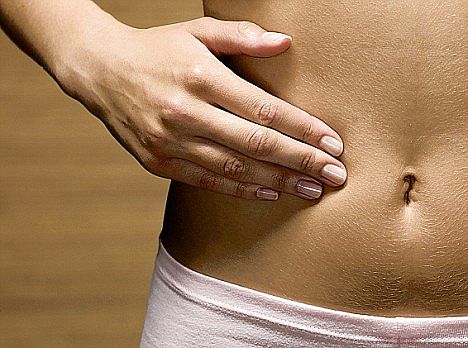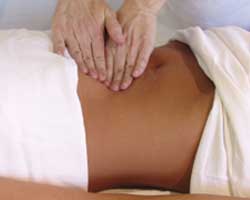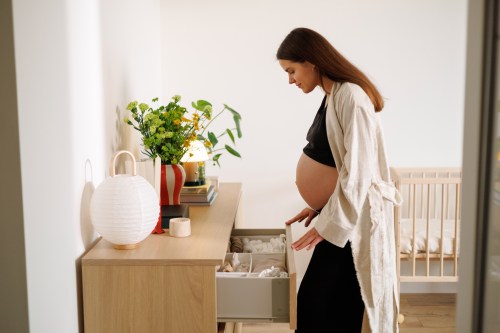
“Women are frequently told by their gynecologist that their uterus is prolapsed, tipped, or tilted. But this is almost never investigated as a source of fertility issues. Even if your uterus is sitting on your fallopian tubes,” explains Nicole Kruck, a NYC massage therapist, who who begs to differ.
Kruck specializes in Maya Abdominal Massage, a method with an admittedly eyebrow-raising name that serves a solid fertility-friendly service—it helps reposition the uterus.
Kruck studied with Rosita Arvigo, the massage-technique’s founder, and a doctor of Naprapathy, an alternative medicine that deals with manipulating tissue, like chiropractors and osteopaths. As an expert in Maya healing techniques and medicinal plants, Dr. Arvigo has performed the holistic massage alongside her work with traditional healers, doctors, and midwives in Central America for more than 30 years, and has written several books about holism. (New Yorkers who’ve visited Chaa Creek in Belize would have seen Arvigo’s medicinal herb garden.) Kruck has expanded on Arvigo’s original method and has been practicing it for 13 of her 14 years as a massage therapist.

Because the uterus is held by several delicate bungee-cord-like ligaments to provide the flexibility and expandability needed for childbirth, it can also wander out of place onto neighboring structures such as fallopian tubes and ovaries, and create fertility issues, Kruck explains.
“The uterus’ position can disrupt the free flow of arteries, nerves, lymphatic vessels coming into the uterus and ovaries, create adhesions, or interfere with normal hormonal feedback and other systems that perform a reproductive role,” she says.
While major causes of a displaced uterus stem from simple accidents in childhood, such as falls, Kruck says long-term, high-impact activities such as running, horseback riding, gymnastics can do the trick. “Without treatment, the uterine ligaments continue to give out just like the elastic in your pants,” she says.
Not surprisingly, then, about 75 percent of women have misplaced uteruses, according to Kruck. One way to tell if yours is out of place? Brown menstrual blood, particularly at the start of a period, a sign that it’s spent more than normal time en route from the uterus. According to Kruck, the journey should be pretty direct. But poor placement can cause blood to take a longer, more circuitous route, like water through a twisted garden hose.

The repositioning Maya Abdominal Massage is part treatment and part tutorial. The technique is a combo of soft tissue manipulation meant to help improve circulation into the abdomen and pelvic area and strengthen the ligaments that hold the uterus in place. “These are essentially bicep curls for the ligaments,” she says.
During a session, Kruck does deeper adjustments while teaching clients how to practice the 5-minute self-care massage at home (acupuncturist Jill Blakeway’s book, Making Babies: A Proven 3-Month Program for Maximum Fertility, which we mentioned on Monday, features how-to steps and photos). With regular self-massage, it can take roughly one to three months to move the uterus and alleviate accompanying baby-making blockages, thereby clearing the road to conceiving for many women.
“Women commonly come in with a list of issues related to their period, fertility, or IVF—for example, painful cramping and low-back pain during periods, having to get up to urinate during the night, painful intercourse in certain positions, frequent yeast infection. The Maya Abdominal Massage can alleviate many of these symptoms” says Kruck proudly. “That’s with the massage and self-care, no drugs.”
Kruck routinely offers workshops around the tri-state area, and practices at the YinOva Center, 80 E. 11th St., at Broadway, Union Square, 212-533-2255; www.fertilegardenmassage.com
Have you tried Maya Abdominal Massage or another type of massage for fertility? Tell us, here!
Sign Up for Our Daily Newsletter
Get all the latest in wellness, trends, food, fitness, beauty, and more delivered right to your inbox.
Got it, you've been added to our email list.










